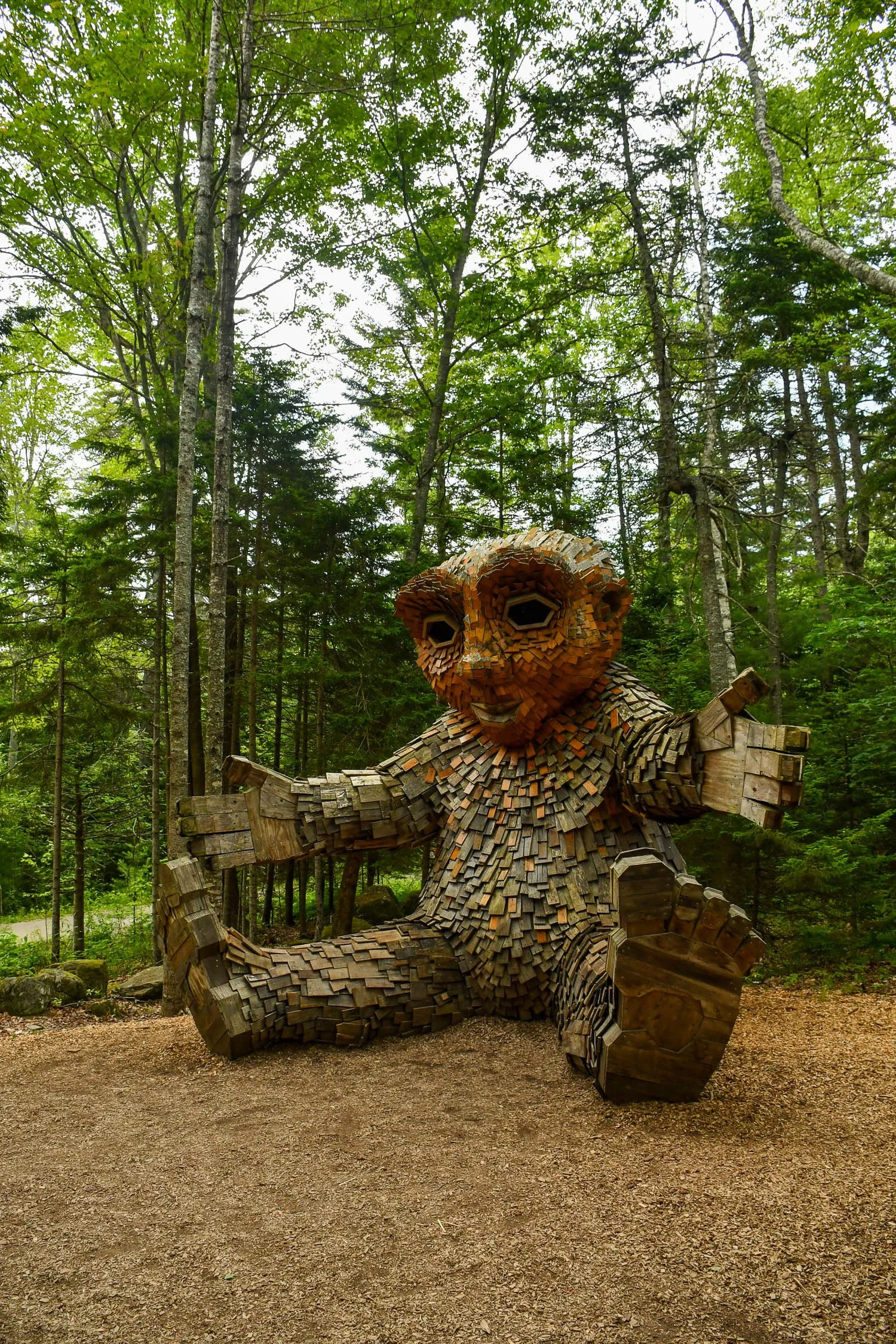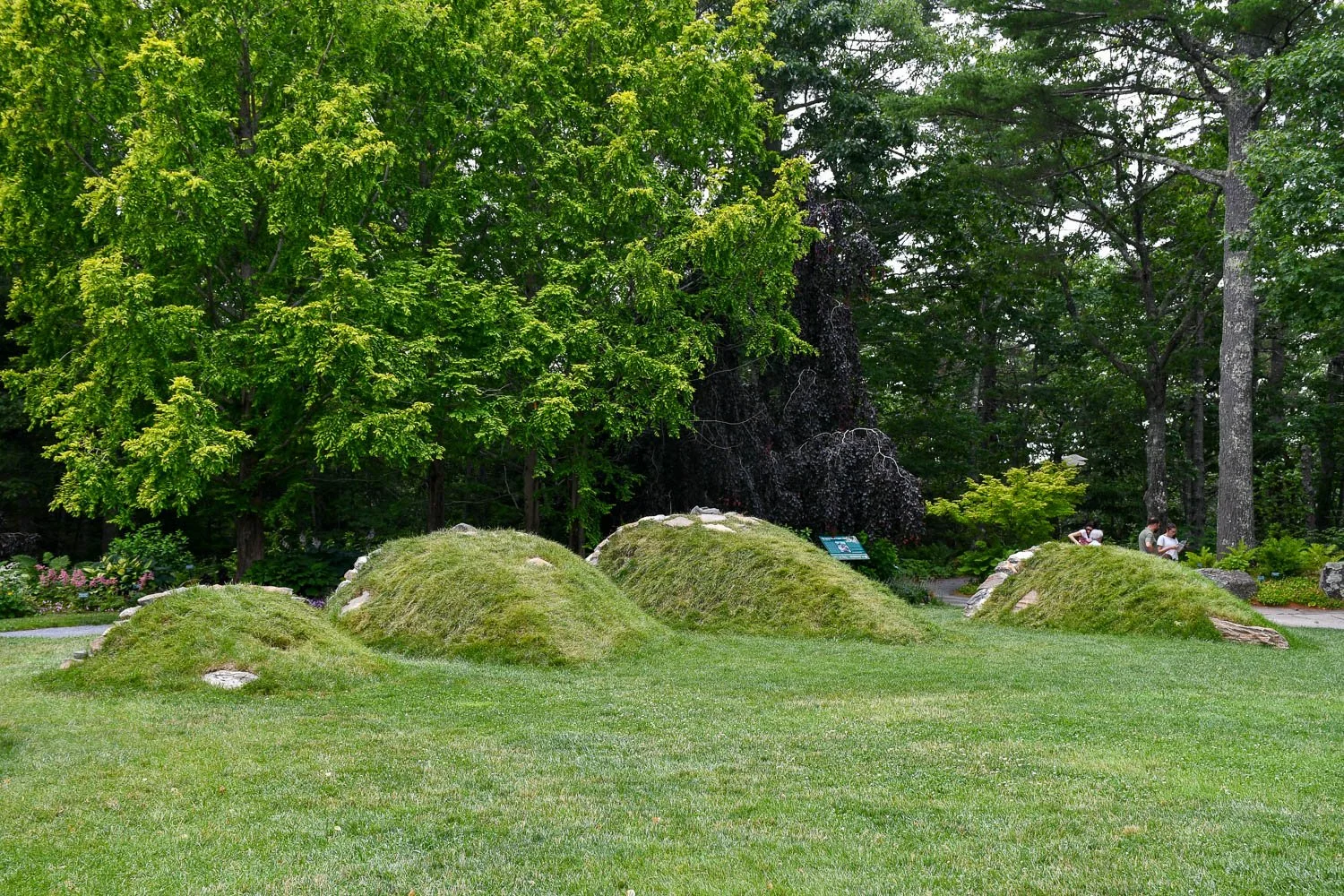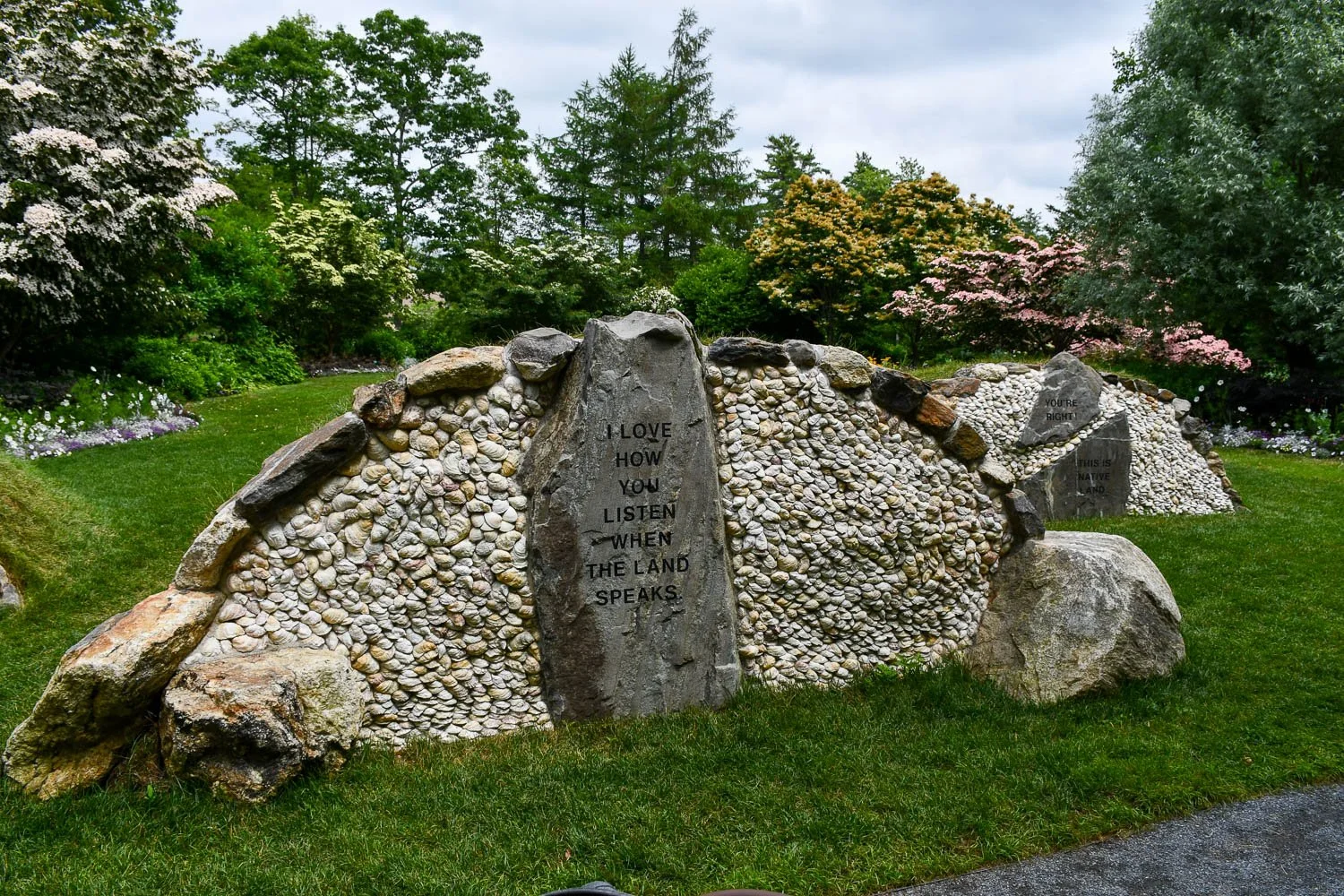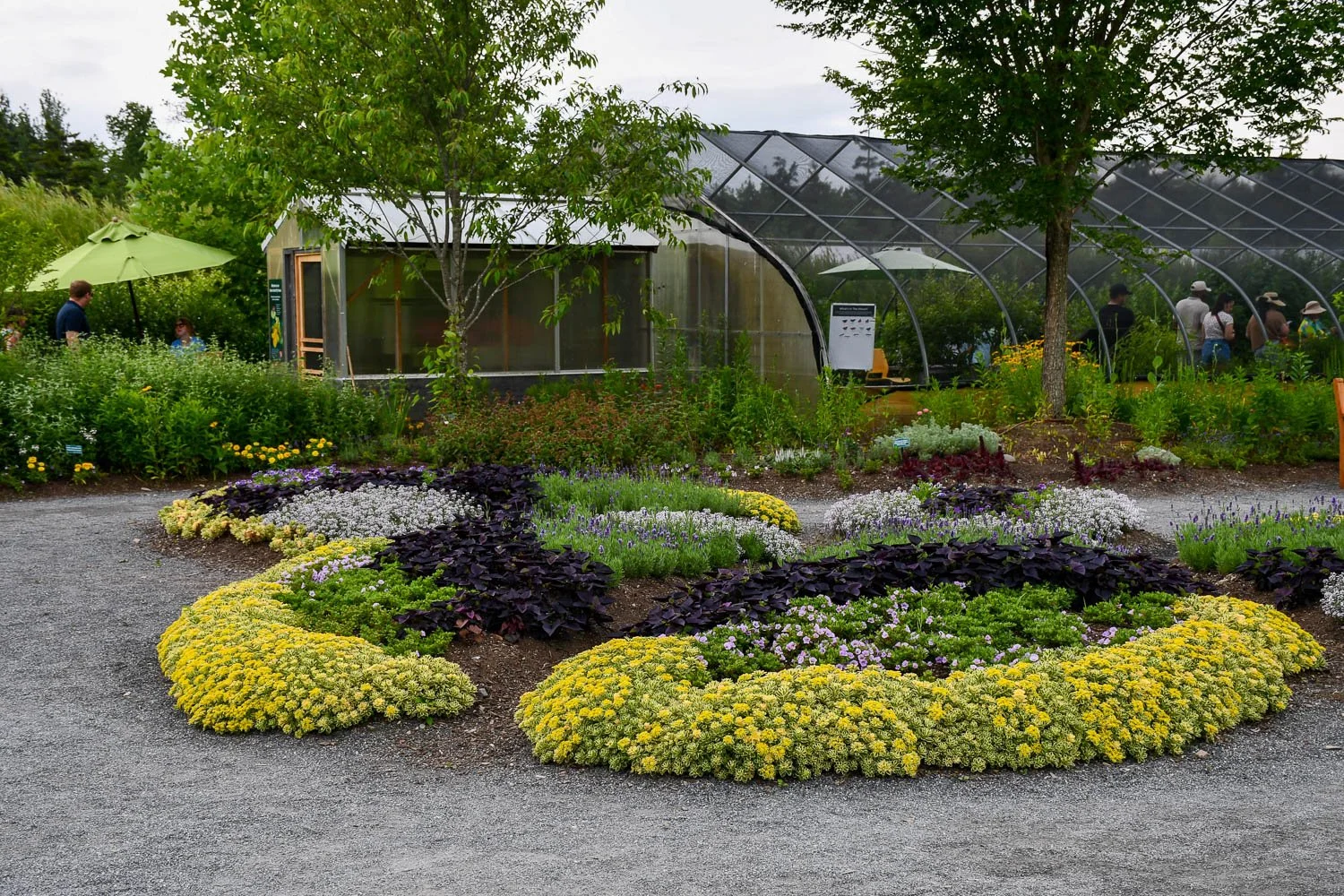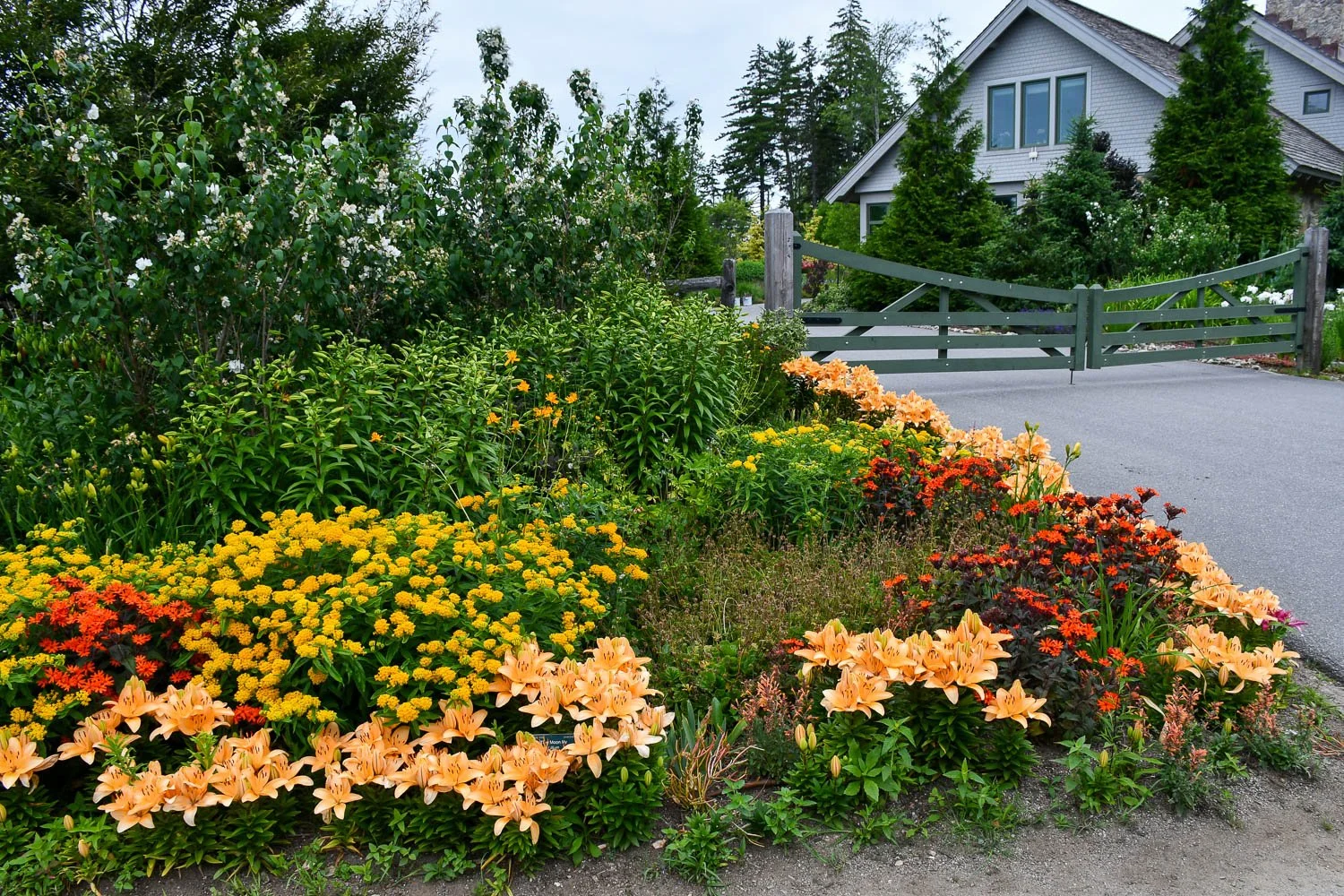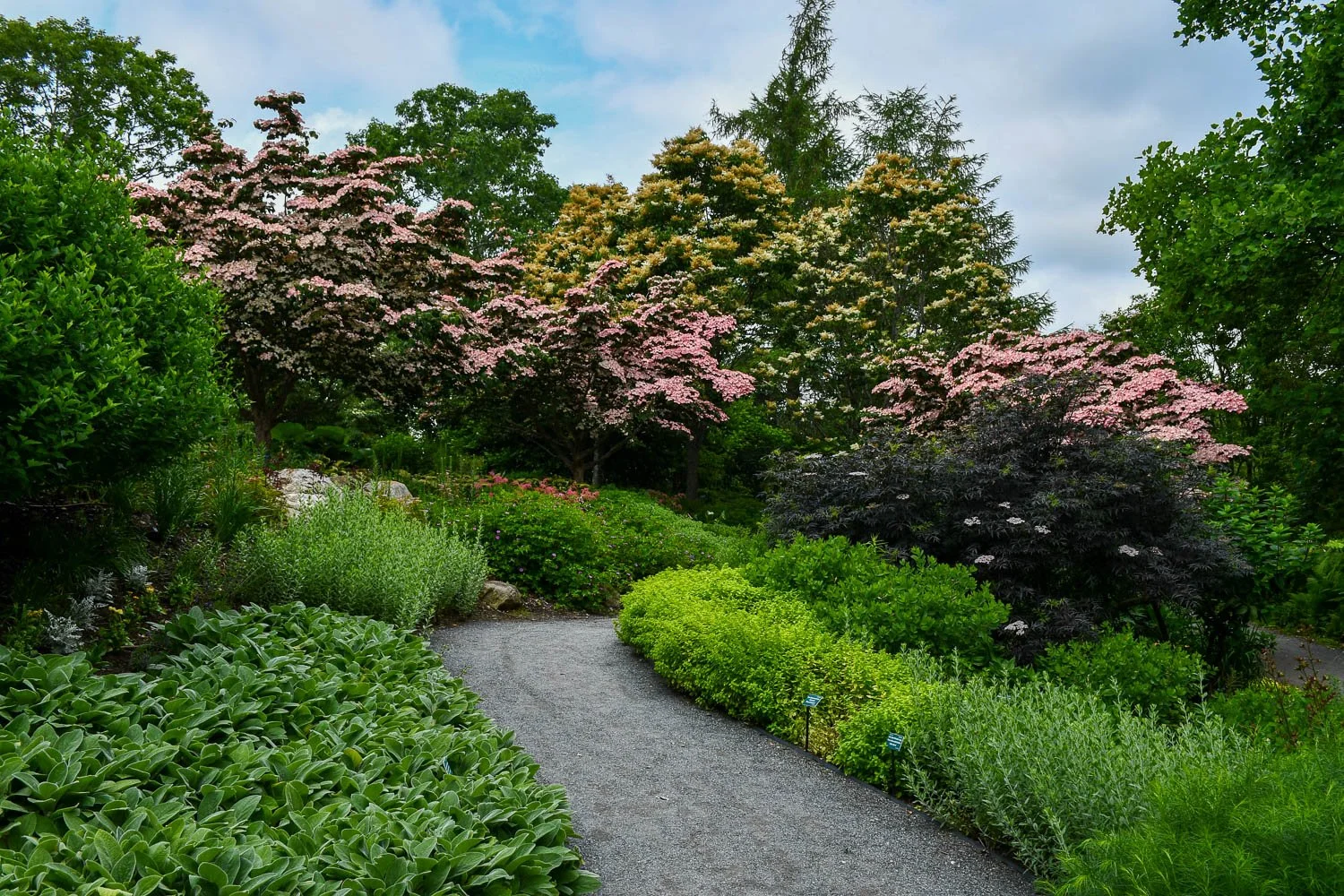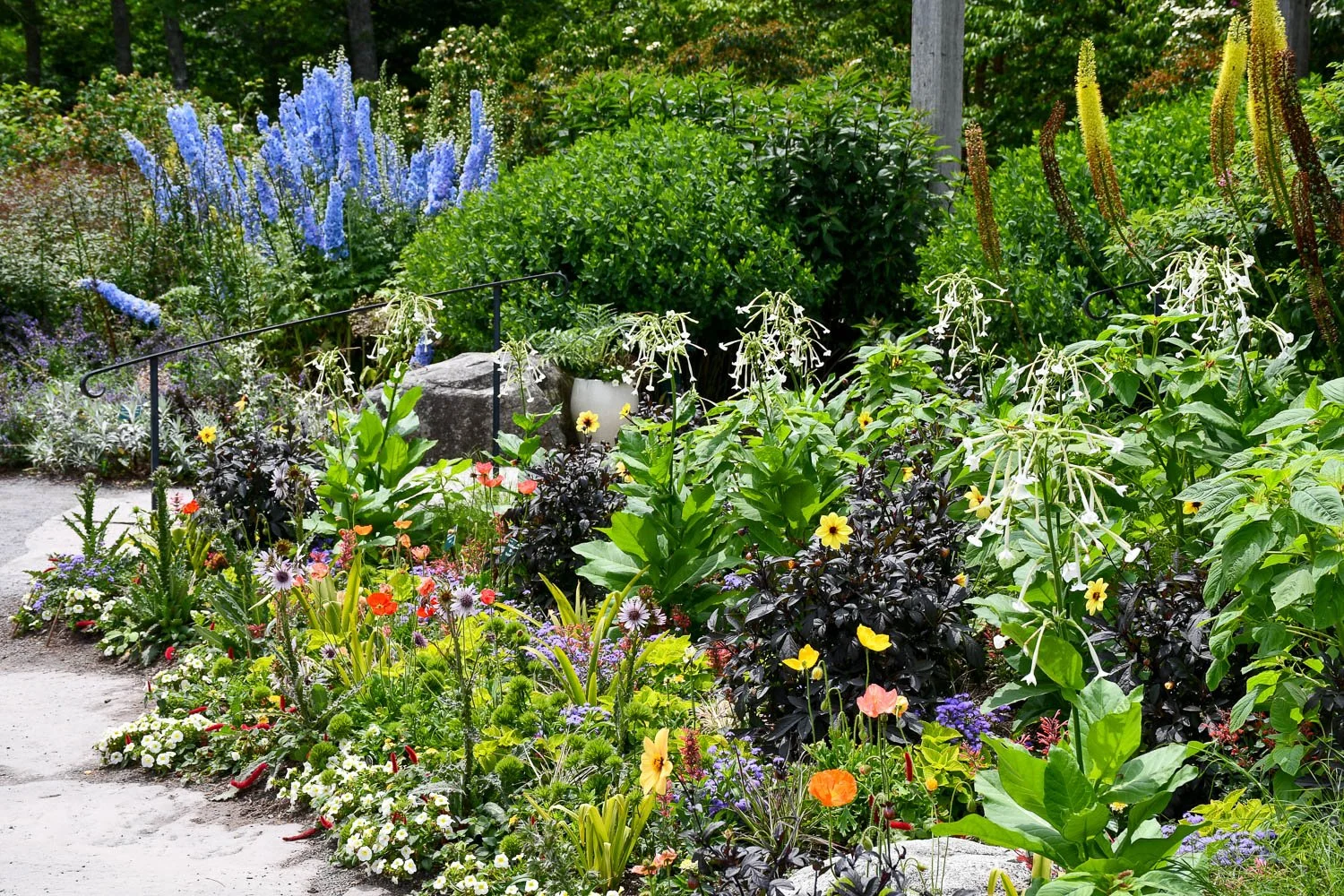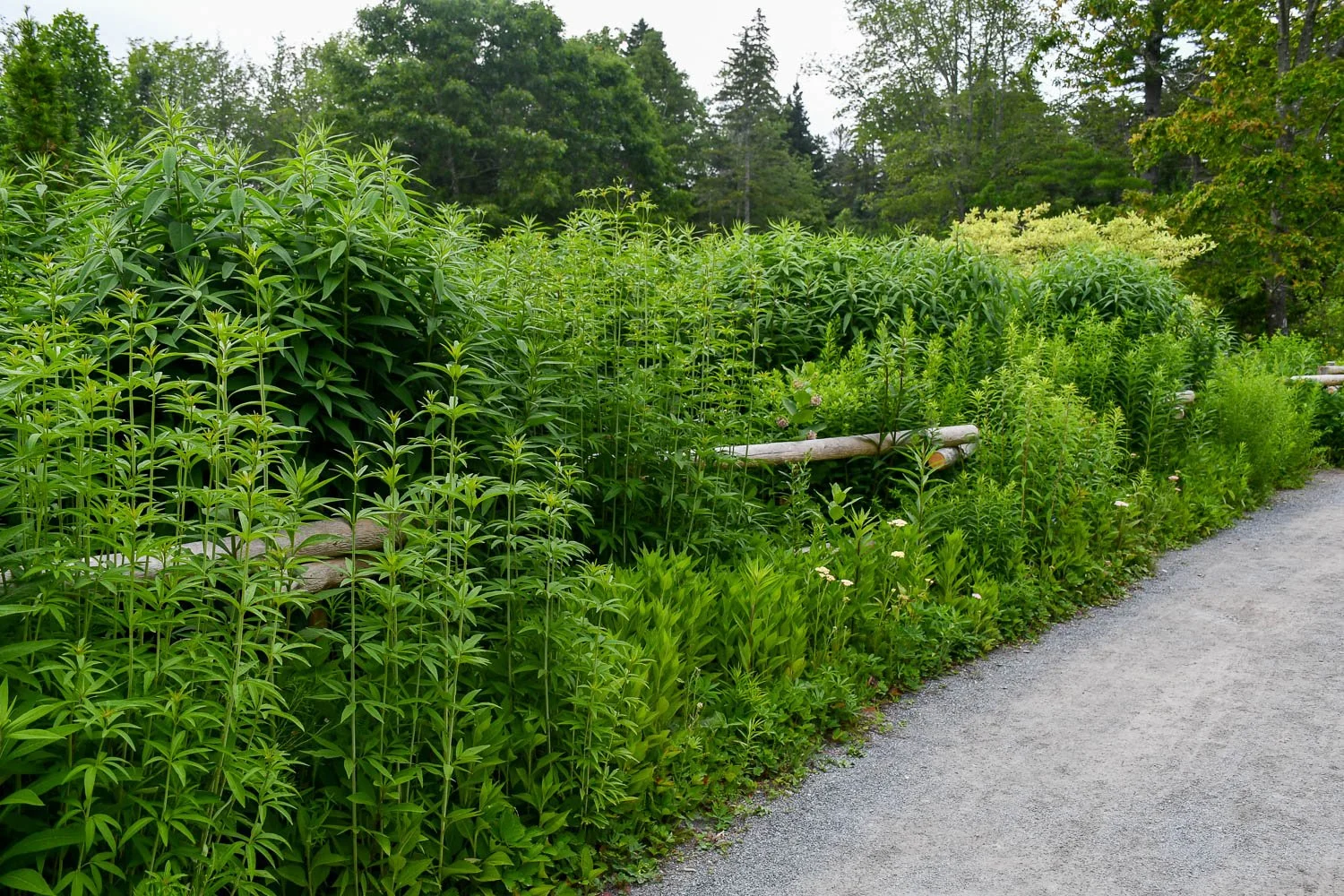One of the highlights of summer was spending a few days in Maine away from the sweltering heat of the southeast. If you go to Maine, you have to go visit Coastal Maine Botanical Gardens. Many horticulturists will tell you this garden is one of their favorites on the east coast and it doesn’t take long to see why.
There are 300 acres located along the rugged coast of Maine, and 17 acres feature more developed gardens and plantings. It had been 13 years since I last visited, and much had changed since my visit. Karen, Magnolia, and my parents joined me, and it was fun to see the garden through their eyes, too. I took plenty of photos during our visit to share with you for inspiration. Enjoy this vicarious trip to see the garden!
LERNER GARDEN OF THE FIVE SENSES
We were fortunate to have Andy Brand, director of horticulture, show us around for a bit and provide more context for things we saw in the garden. For example, he told us that the entrance to the garden and parking lot was totally different than when I first visited in 2012!
The Lerner Garden of Five Senses is designed to provide experiences for the five senses. This pavilion offered opportunities with therapeutic horticulture. There was this wonderfully arranged ergonomic tool shelf inside.
I loved these vertical gardens made from lobster traps. They allow people of diverse learning styles to understand how to grow plants.
The area focused on sight featured beautiful layered plantings and interesting textures and colors.
A close up of some of the interesting colors and textures in the five senses garden.
Further in the garden, water heightened the experience in the area for hearing.
In the area for touch was this wonderful tactile labyrinth. Notice how the stones are larger on the outside, and as you approach the center, they become smaller. Andy said people take their shoes off and walk it to feel the stone size change.
CHILDREN’S GARDEN
The children’s garden at Coastal Maine Botanical Gardens is one of the best I’ve visited. The plantings are incredible, and there’s whimsy everywhere.
In the cottage garden, they made the fence fun by cutting out cat faces for the tops.
Another shot of the cat face fence. I just love the cottage garden feels.
I thought these little concrete pillars were cute in the children’s garden. The color echo with the Astilbe (false goat’s beard) and Hosta (hosta) flowers was a nice touch.
The maze lawn in the children’s garden allows for a usual patch of turf to have more whimsy.
Don’t you love the green roof on this shed in the children’s garden?
Scattered around the garden were these incredible wooden trolls. The chair gives a sense of how large Roskva is.
Lilja was another troll that we found in the woods. Free hugs from a ~15 foot tall wooden troll!
OTHER SIGHTS AROUND THE GARDEN
Coastal Maine Botanical Gardens has made an effort to engage with indigenous artists. The Native Guide Project: CMBG, an art installation by Anna Tsouhlarakis, from one angle featured raised grassy knolls…
…but on the other side you could see these were middens made of oyster shells and rocks with words carved in them. I loved this quote, “I love how you listen when the land speaks.”
Another indigenous artist installation called Eci-Mahsosiyil/Fiddleheads by Shane Perley-Dutcher featured these interpretations of fiddlehead ferns that appear rising from this naturalistic planting.
Another fun highlight was this native butterfly house. It was a hoophouse covered with netting that had native plants for butterflies and their larvae inside. This structure helped to highlight the plants we can use in our landscapes to provide resources for insects.
I was impressed by the hard work of the Coastal Maine Botanical Gardens staff and volunteers. They were out in force when we visited. This gentleman was deadheading Cosmos (cosmos).
Another favorite sculpture was these rebar deer by Wendy Klemperer. Let’s be honest. This type of deer is the only kind we want in our gardens!
And, I loved this creative installation of words made and painted. My guess is they used silicone to write the text and then painted over them.
THE PLANTS AT COASTAL MAINE BOTANICAL GARDENS
And, we saw some wonderful plantings at Coastal Maine Botanical Gardens. Even before we got inside we found this lovely bed of lilies, what I believe to be Lychnis × arkwrightii 'Vesuvius' (catchfly), and Asclepias tuberosa ‘Mellow Yellow’ (butterfly milkweed).
This beautiful planting of Heuchera (coral bells), Astilbe, Baptisia (wild indigo), and more offered a variety of colors and textures.
Cornus kousa ‘Schmred’ HEART THROB (kousa dogwood) were just finishing their bloom and looked riveting with their pink bracts.
I always love seeing interesting cultivars of underused plants. ‘Silberstein’ is a speckled selection of Phytolacca americana or pokeweed!
I loved this sunny mass of Oenothera tetragona (northern sundrops).
The Delphinium (delphinium) were in full bloom during our visit. You won’t see these in Texas!
A smorgasbord of annuals provide great color near the arbor garden.
I really liked this blocked perennial planting of Monarda (bee balm), Penstemon (beardtongue), Allium (onion), and Pycnanthemum (mountain mint) near the great lawn.
The fragrance from Asclepias syriacus (common milkweed) was so good in Maine. We saw Monarchs dancing above the lawn nearby.
Near the children’s garden there was this thick patch of competitive species. It provided a great natural fence between the children’s garden and this gravel path.
THE PARKING LOT
One of my favorite parts of Coastal Maine Botanical Gardens was even before we entered the garden. The plantings in the parking were thickly planted in a naturalistic style.
Even though the plantings were wild, there was still an order and repetition to them, which helped convey legibility.
In this wilder area, patches of color from Asclepias tuberosa ‘Mellow Yellow’ and what I believe to be a silvery species of Pycnanthemum communicated purpose with the planting.
As people leave the garden, how can they not smile from seeing Asclepias tuberosa ‘Mellow Yellow’?















